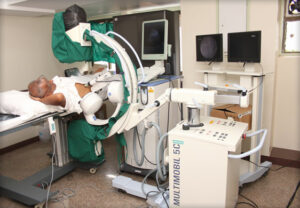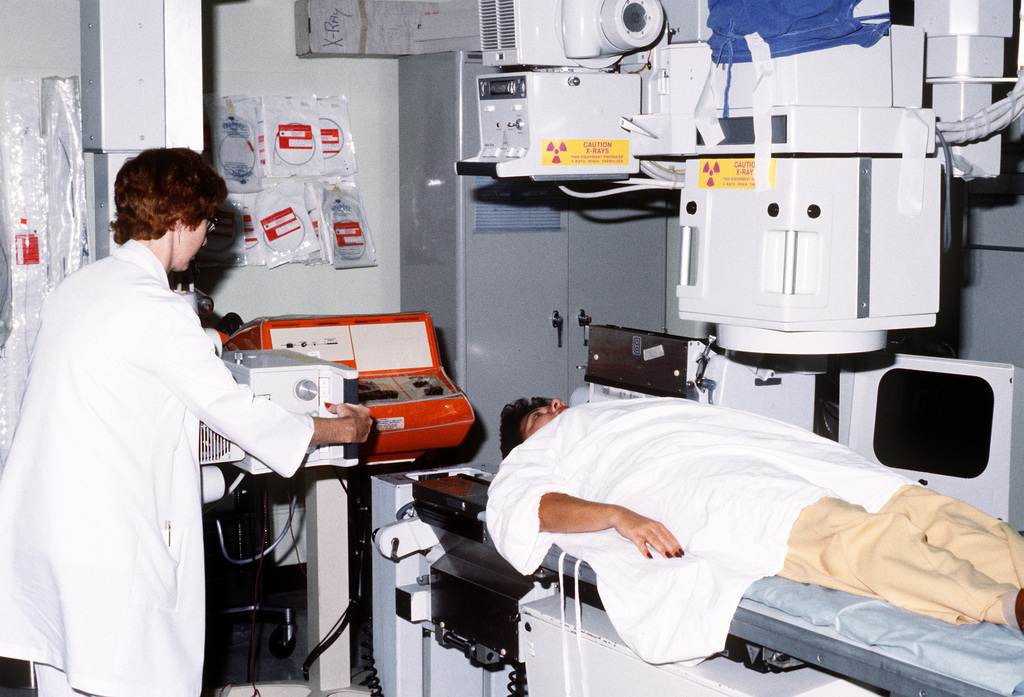If you have ever been told you have a kidney stone, you may wonder what that means. A kidney stone is a hard, crystalline material that forms in the urine. It can cause pain and other problems if it stays in the urinary tract. Sometimes, lithotripsy may be recommended to break up the stones and help them pass more easily. This blog post will explain what lithotripsy is and how it works!
Contents
What Is Lithotripsy?
 Lithotripsy is a non-invasive procedure used to treat kidney stones that are too large, or too hard, to pass on their own. The procedure uses sound waves (also called shockwaves) to break up the stone into tiny pieces that can be passed out of the body in the urine. It’s important to note that lithotripsy cannot be used to treat all types of kidney stones; it’s only effective for certain types.
Lithotripsy is a non-invasive procedure used to treat kidney stones that are too large, or too hard, to pass on their own. The procedure uses sound waves (also called shockwaves) to break up the stone into tiny pieces that can be passed out of the body in the urine. It’s important to note that lithotripsy cannot be used to treat all types of kidney stones; it’s only effective for certain types.
However, if your doctor determines that you have a stone that can be treated with lithotripsy, it can be a safe and effective way to treat the problem.
How Does Lithotripsy Work?
Lithotripsy works by using a machine to send sound waves (shockwaves) directly to the kidney stone. The sound waves break up the stone into tiny pieces that can then be passed out through the urine. The procedure is usually done in an outpatient setting, meaning you won’t need to stay overnight at a hospital or clinic.
Most people find lithotripsy to be a quick and convenient way to treat kidney stones. The procedure typically takes between 30 and 60 minutes, depending on the size of the stone being treated. Painkillers are usually given before and after the procedure, as they can be uncomfortable when the shockwaves are applied. Recovery times vary from person to person, but most people feel better within a few days.
The success rate of lithotripsy is usually very high, with most people reporting that all the stones have been broken up after one session. However, larger stones may require more than one session for complete destruction. It’s important to follow your doctor’s instructions carefully to ensure that all the stones are passed out of your body.
How To Prepare For Lithotripsy?
 Your doctor will provide specific instructions on preparing for your lithotripsy session. Generally, this includes avoiding any medications or supplements that may interfere with the procedure and drinking plenty of fluids. It’s also important to follow any instructions given regarding what you can eat or drink before the procedure.
Your doctor will provide specific instructions on preparing for your lithotripsy session. Generally, this includes avoiding any medications or supplements that may interfere with the procedure and drinking plenty of fluids. It’s also important to follow any instructions given regarding what you can eat or drink before the procedure.
You should also talk to your doctor about any allergies or medical conditions you have, as these could affect how the lithotripsy is performed. Additionally, make sure to ask your doctor any questions you may have so that you are fully prepared and comfortable during the procedure.
What To Expect During Lithotripsy
Lithotripsy is an important treatment for those suffering from kidney stones, and it can be a safe and effective way to break them up into small pieces. Knowing what to expect before, during, and after the procedure can help you feel more comfortable while undergoing the process.
Lithotripsy is generally a safe and effective procedure, but it can cause discomfort. During the procedure, you may feel pressure or mild pain from the shockwaves. You may also have some bleeding or bruising afterward. It’s important to follow your doctor’s instructions for post-procedure care, such as taking pain medications and drinking plenty of fluids.
After lithotripsy is complete, it can take several weeks for all the pieces of the stone to be passed out of the body in the urine. Your doctor will likely recommend follow-up testing to ensure that all the pieces were eliminated. It’s important to follow all your doctor’s instructions during this time, as it can help prevent future kidney stones from forming.
Risks Of Lithotripsy
It’s also important to follow your doctor’s instructions carefully to ensure a successful outcome. Doing so can help reduce the risk of future stones forming and provide relief from symptoms such as pain and discomfort. With the right preparation and follow-up care, lithotripsy can be a safe and effective way to manage kidney stones.
The risks of lithotripsy are generally minimal, but they can include bleeding and discomfort during the procedure. Additionally, some people may experience side effects from the pain medications used during and after the procedure. It’s important to talk to your doctor about any concerns you have before undergoing lithotripsy.
In rare cases, lithotripsy can cause damage to other structures in the body such as blood vessels or organs. Your doctor will be able to provide more information on the potential risks and how to avoid them.
Overall, lithotripsy is a safe and effective way to break up kidney stones so that they can be passed out of the body. It’s important to follow your doctor’s instructions carefully. By doing so, you can help ensure a successful outcome and reduce the risk of future kidney stones.
If you’re considering lithotripsy for treating your kidney stones, it’s important to talk to your doctor about the risks and benefits. They can provide more detailed information on what to expect during and after the procedure and answer any questions you may have. By taking the time to prepare and discuss your options with your doctor, you can ensure a successful outcome and reduce the risk of future kidney stones.
Is Lithotripsy Procedure Painful?
Lithotripsy is generally not painful, although some people may experience discomfort during the procedure. Your doctor will give you pain medications to reduce any discomfort and make sure that you’re comfortable throughout the process.
After the procedure, it’s normal to feel some soreness in your back or abdomen. This should go away within a few days, but contact your doctor if you experience any pain that lasts longer.
What Size Kidney Stone Requires Lithotripsy?
The size of the kidney stone can affect whether or not lithotripsy is necessary. Generally, stones larger than 5 millimeters in diameter may require lithotripsy to break them up into smaller pieces. Smaller stones may be able to pass on their own and do not need to be treated with lithotripsy.
What To Eat After Lithotripsy?
It’s important to eat a healthy diet after lithotripsy as it can help reduce the risk of future kidney stones. Eating a diet rich in fruits, vegetables, lean protein, and whole grains can help promote kidney health. Additionally, drinking plenty of water is essential for flushing out any remaining pieces of the stone. Your doctor may also recommend avoiding certain foods. Foods such as oxalate-rich foods can increase the risk of new stones forming.
It’s also important to talk to your doctor about any dietary supplements you may be taking. Some supplements, such as calcium or vitamin D, can increase the risk of forming kidney stones. You should also follow any other instructions your doctor has given you for post-procedure care.
Conclusion
Lithotripsy can be a safe and effective treatment for kidney stones. Knowing what to expect before, during, and after the procedure can help you feel more comfortable while undergoing the process. It’s also important to follow all your doctor’s instructions carefully to reduce the risk of future stones forming. Additionally, following a healthy diet and drinking plenty of water can help promote kidney health.
Consider contacting FitMantra for additional information on nutrition and fitness. You can also get in touch with their nutrition experts through our online nutrition counseling, who can guide you through the process and help you achieve your fitness goals. You can also lose weight with the help of our weight loss program. Download our Fitness app on Android to learn more about us.
